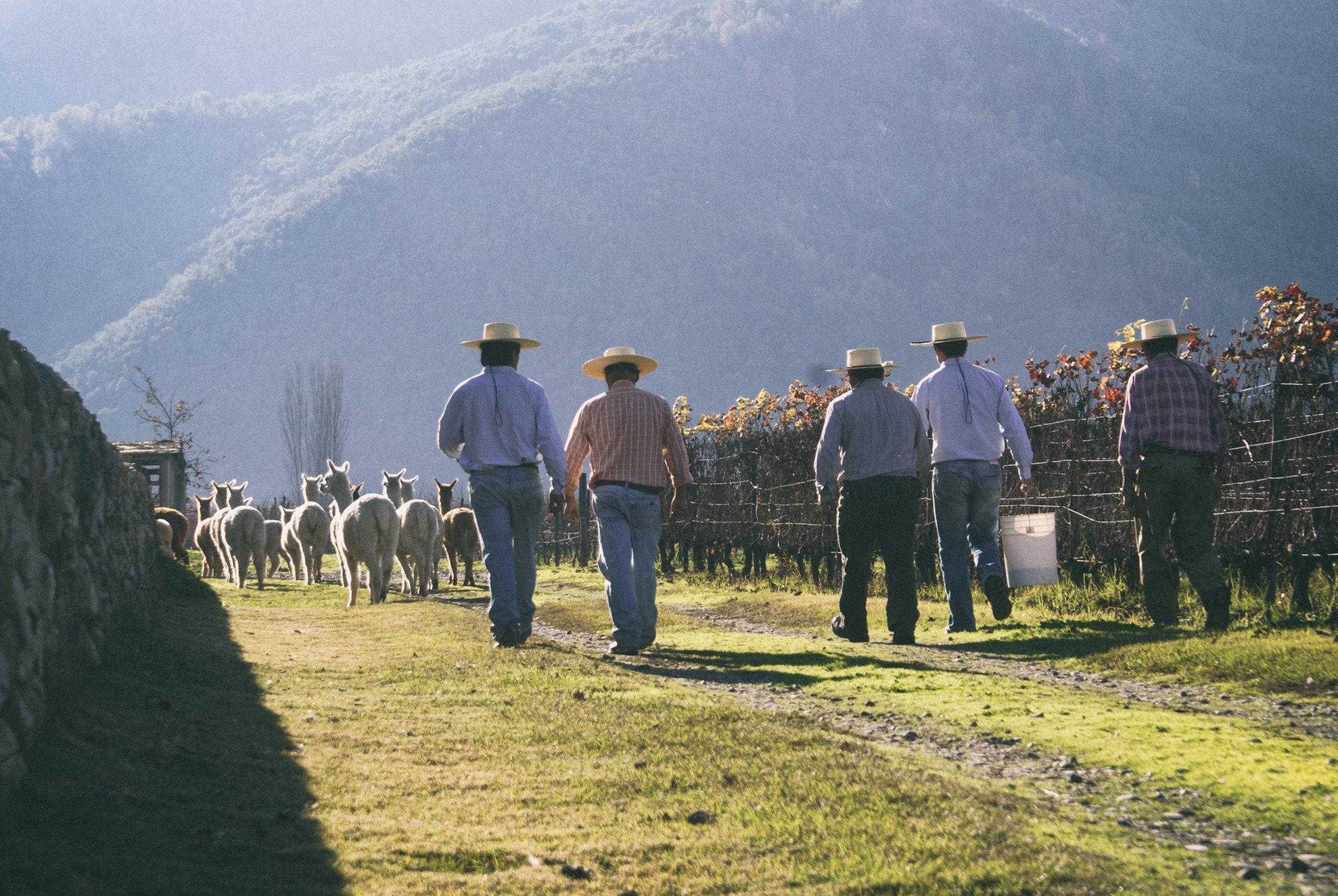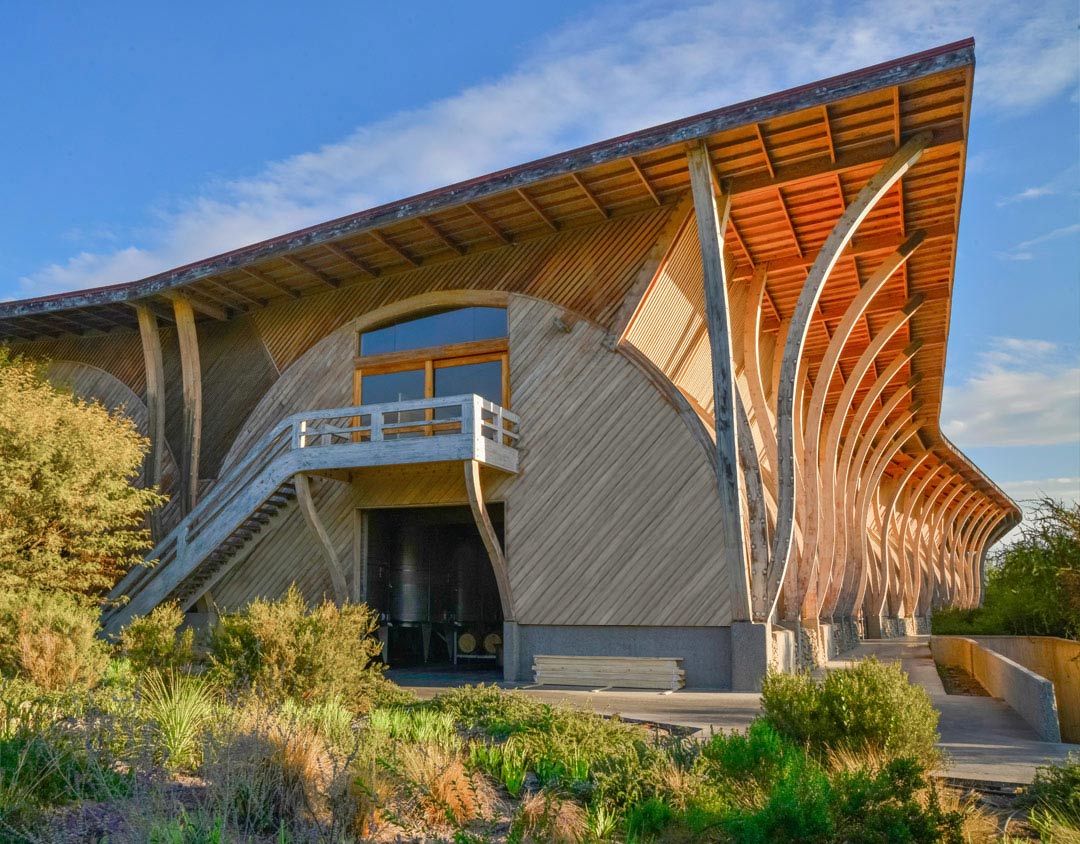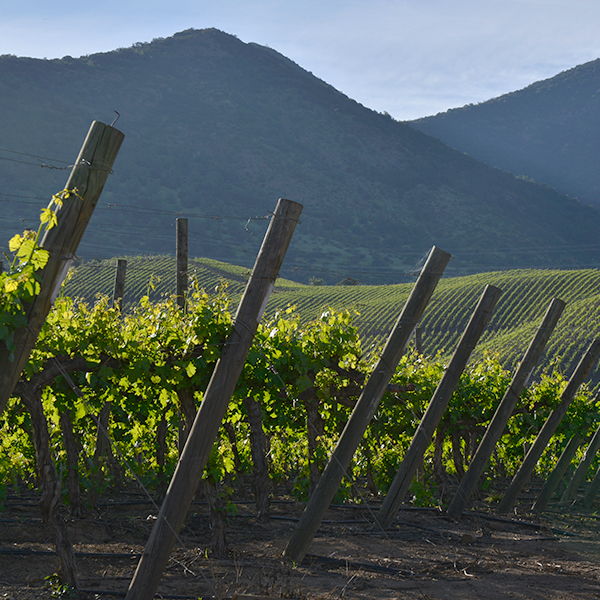Chile
Chile stretches almost 3,000 miles along South America’s Pacific coast, though vineyards occupy about 800 miles mainly south of Santiago. Its six major Denominations of Origin (DOs) are Atacama, Coquimbo, Aconcagua, Central Valley, Sur, and the recently established Austral Region. The geography is defined by the Andes to the east and the cooling Humboldt Current from the Pacific, both of which moderate what would otherwise be extreme conditions. The north is hot and arid, requiring irrigation, while the south is cooler, wetter, and has a shorter growing season.
Chilean wine law, formalized in 1995, established rules for grape variety, vintage, and origin labeling, and today most wines also meet EU standards. Red varieties account for more than 70% of vineyards, led by Cabernet Sauvignon, Carménère, Merlot, and Syrah. Among whites, Sauvignon Blanc and Chardonnay dominate, while Muscat de Alexandria remains important for distillation.
In the north, Atacama and Coquimbo were once devoted to Pisco and table grapes, but Elqui is now producing promising Syrah at high altitudes, and Limarí is gaining recognition for Chardonnay grown on limestone soils. Further south, Aconcagua combines warm interior valleys suited to Bordeaux-style reds with coastal Casablanca and San Antonio, which are much cooler and known for fresh Sauvignon Blanc, Chardonnay, and Pinot Noir.
The Central Valley remains Chile’s most established wine region, stretching from Maipo to Maule. Maipo is synonymous with structured Cabernet, while Rapel Valley (Cachapoal and Colchagua) is increasingly associated with Carmenère and ripe red blends. Curicó and Maule are large, productive zones, ranging from bulk wine to high-quality vineyards, with Maule historically dominated by País but now shifting toward Cabernet. In the south, Itata and Bío Bío retain old plantings of País and Muscat, alongside newer Pinot Noir and Chardonnay. Malleco, at the southern edge, is a small but cool area showing promise for elegant wines. Recently, new DOs like Rapa Nui and Chiloé mark Chile’s expansion into extreme sites, while new geographic designations—Costa, Andes, and Entre Cordilleras—highlight the influence of climate and altitude across the country.
Argentina
Argentina ranks as the world’s fifth largest wine producer, with vineyards concentrated along the Andes where snowmelt irrigation sustains the arid conditions. The climate is continental, with hot summers, low rainfall, and risks such as the fierce Zonda wind and periodic hail. Higher elevations extend the growing season and help retain freshness in grapes.
Red varieties dominate, led by Malbec, Argentina’s signature grape, along with Bonarda, Cabernet Sauvignon, Syrah, and Merlot. Among whites, Pedro Giménez remains the most planted, but Torrontés has become the country’s distinctive aromatic specialty. Chardonnay and Chenin Blanc are also grown, particularly in cooler, elevated zones.
Mendoza is the heart of production, accounting for around three-quarters of all vineyard land. It spans northern, central, southern, and eastern zones, with the Uco Valley standing out for its high-altitude sites. Soils are generally alluvial and sandy, which, combined with the dry climate, keep vineyards largely free from pests and disease. Malbec thrives here, producing wines ranging from plush and fruity to structured and age-worthy. Cabernet Sauvignon and Chardonnay are also widely successful, with Sémillon and Chenin Blanc present in some southern districts.
To the north, Salta and Catamarca cultivate Torrontés and Malbec in some of the world’s highest vineyards, where altitude offsets intense heat. San Juan, Argentina’s second-largest wine region, has historically produced grapes for brandy and bulk wine, but Syrah and Bonarda are becoming increasingly important. Patagonia, in the far south, offers a cooler climate and longer growing season. Here, Pinot Noir, Malbec, Merlot, and crisp white wines are showing great potential, supported by chalky soils and a steady climate. La Pampa, just north of Río Negro, is emerging as another new frontier for viticulture.
SHOP THE WINES
Emiliana Organic Vineyards is one of Chile’s most innovative and sustainable wineries, pioneering organic and biodynamic practices across their vineyards. With a philosophy deeply rooted in harmony between nature and winemaking, Emiliana produces vibrant, expressive wines that reflect both the purity of the land and the richness of Chile’s diverse terroirs. Today, Emiliana is celebrated worldwide as the #1 organic winery on the planet.
Among their standout labels, the Elemental Chardonnay shines for its bright freshness and balance. Grown in cool-climate vineyards, this Chardonnay offers notes of citrus and tropical fruit, complemented by a crisp minerality and subtle creaminess. It’s a versatile, approachable white that embodies Emiliana’s commitment to crafting wines that are both sustainable and delicious — perfect for any occasion.
Valdivieso is one of Chile’s most historic wineries, with roots dating back to 1879 as the first in Latin America to produce sparkling wine. Today, Valdivieso continues to innovate, offering a diverse portfolio that highlights Chile’s unique terroirs — from everyday expressions to bold, cellar-worthy icons. Their wines embody a blend of tradition, craftsmanship, and a pioneering spirit that has shaped Chilean winemaking for over a century.
The 2019 Éclat VIGNO Carignan is a standout example of that innovation and commitment to heritage. Crafted from old-vine Carignan in Maule Valley, this wine is part of the VIGNO (Vignadores de Carignan) movement, dedicated to preserving and showcasing this historic variety. The result is a powerful yet refined red, with vibrant red fruit, earthy spice, and firm tannins balanced by fresh acidity. A true expression of Chile’s viticultural legacy, and one of Valdivieso’s most compelling wines.
RUTINI WINES
Founded in 1885, Rutini Wines is one of Argentina’s most historic and respected wineries, known for combining tradition with innovation in the heart of Mendoza. 🍇 Their Trumpeter range brings that heritage into everyday moments — approachable yet elegant wines from high-altitude vineyards, offering vibrant Malbecs, crisp Chardonnays, and refreshing Rosés. Crafted with Rutini’s signature quality, perfect for relaxed occasions with a touch of sophistication.

PELLERITI - PRIORE
Marcelo Pelleriti Wines embodies the vision of one of Argentina’s most acclaimed winemakers, the first Latin American to achieve a perfect 100-point score from Robert Parker. Drawing on decades of experience in both Bordeaux and Mendoza, Marcelo crafts wines that balance French elegance with Argentine intensity. Each bottle is a testament to his artistry, passion, and respect for the terroir of the Uco Valley.
The Marcelo Pelleriti Signature Malbec 2021 captures the very essence of that philosophy. From high-altitude vineyards, this Malbec bursts with layers of ripe plum, blackberry, and violets, framed by subtle spice and fine tannins. Elegant yet powerful, it reflects the precision and depth that define Pelleriti’s winemaking — a wine made to impress today and evolve beautifully over time.

CASARENA
Casarena is a boutique winery based in Mendoza’s famed Luján de Cuyo region, dedicated to crafting single-vineyard wines that reveal the distinct character of Argentina’s high-altitude terroirs. With meticulous vineyard management and modern winemaking, Casarena produces elegant, terroir-driven wines that reflect both innovation and a deep respect for tradition. Each label tells the story of Mendoza’s unique soils, microclimates, and pioneering spirit.
The Naoki Malbec is one of Casarena’s most striking single-vineyard expressions. From carefully selected parcels, this wine delivers intense aromas of dark fruits, violets, and spice, balanced by refined tannins and vibrant freshness. Concentrated yet elegant, it showcases the precision and personality that define Casarena’s winemaking — a Malbec crafted to stand among Argentina’s finest.






